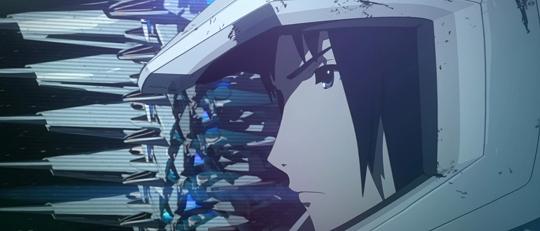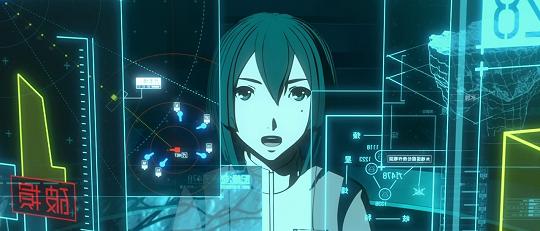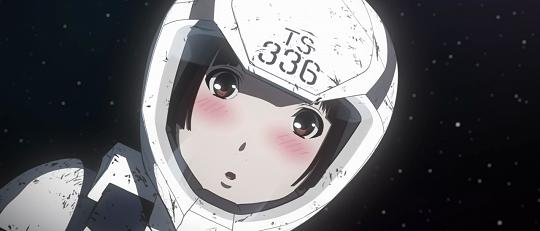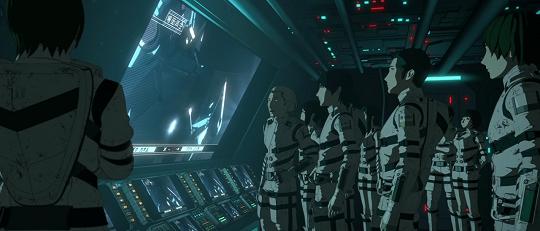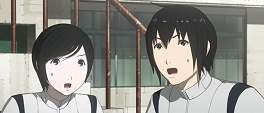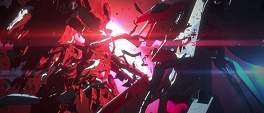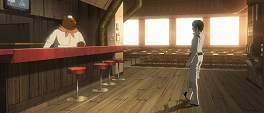The first trailer that I saw for Sidonia no Kishi (Knights of Sidonia) was linked to by someone who was obviously very excited at the prospect of the series. For me, the trailer produced only indifference: giant robots, monsters, space; I’ve seen all of this before. Even the post-broadcast Netflix announcement trailer wouldn’t have convinced me, and I only saw that having watched the whole series. The core issue being that robots fighting in space is an easy sell but it’s not what makes Sidonia a special series. You can’t tout super-massive architecture, questioning the nature of humanity or glorious science-fiction as selling points in a minute and thirty seconds.
Many people have categorised the series as “hard” science-fiction which seems like a misuse of the term. Sidonia is very rich, but its use of laborious and detailed scientific explanations is extremely limited and most of the time non-existent - this isn’t Banner of the Stars. This is about a gargantuan colony “seed” ship, the titular Sidonia, floating through the cosmos defending itself against grotesque aggressors, the Gauna.
Enter Nagate Tanikaze, ragamuffin and perpetual do-gooder, forcibly brought out of the sub-terra maze of pipework onto the “surface” of Sidonia and plonked straight into a pilot’s uniform. But we haven’t seen the Gauna in a hundred years, why do we need pilots?! You can guess what comes next.
The series’ formative few episodes spend as little time as possible building up towards the inevitable. You know the Gauna are going to start attacking and that Nagate is going to become an ace robot “Gardes” pilot, getting to that point and beyond is where the series shows both its strengths and weaknesses. Coming from manga author Tsutomu Nihei, Sidonia the ship is amazingly realised with a beautiful sense of scale (read: BIG) and both the history and the science behind the ship and its inhabitants is strong and well meted out; unfortunately the inhabitants themselves aren’t as convincingly drawn.
And not in the sense of the CG which, like Arpeggio before it, has both its advocates and its detractors, but with the character drama inbetween the skirmishes with the Gauna. Nagate is the first casualty of this with his default setting of cluelessly kind giving him a naivete that means when he is faced with an obvious plot point, he blithely accepts it when we, the audience, are screaming for him to ask more. Being unpretentious though means he is very easy to like and can be reliably counted upon to do the “right thing” rather than the necessary thing. His ascension to hotshot pilot does mean though that several ladies push themselves into an orbit around him, all of whom show slightly more promising development.
The green haired Yuhata tracks a similar career progression to Nagate but in a command role and it is her pragmatic curiousity that leads to a lot of the story revelations within these first twelve episodes. Hoshijiro on the other hand is a victim of the plot and, for a moment at least, seems like she’s going to be another addition to the Women in Refrigerators trope. If Nagate was adversely affected by her for more than an episode this would certainly be the case; odd when the series goes to great lengths to portray the burgeoning puppy-dog affection between them. Then there’s Izana.
Originator of many of the puffy, pouty “reaction faces” so beloved by internet avatar creators, Izana introduces him/herself as a “third gender” - biological gender rather than psychological gender. With androgynous looks and obvious overtures towards Nagate, Izana is the starting point for Sidonia’s most prevalent theme of transhumanism and, subsequently, what it means to be human. Like any good sci-fi, Sidonia holds a mirror up to our current time by exploring ideas and technologies being developed today.
So Izana’s gender was a result of humanity’s voyage into the stars and to combat a possibly lopsided and limited population. Pan-gender and intersex issues aside, it would be lopsided when you have the Honoka sisters who you initially assume are part of a multiple birth (quintuplets, no wait, septuplets, octuplets?!) until it becomes clear that they too were crafted rather than born. From there we’re introduced to hybrids, cybernetics (bear arms), effective immortality, accelerated healing and more; it becomes obvious that what humanity was before has ceded to pragmatism and necessity, to survive it must change and adapt. No more so is this obvious than with the revelation that humans can now photosynthesize rather than ingest food which is where the hard sci-fi taxonomy definitely breaks down given the practical realities of this. In realistic terms it just provides opportunities for some of the many ladies to float naked and seductive in ultraviolet light.
The Gauna though are the keenest indicator of this theme, mutating and transforming over the course of the series until the spoilerific obvious happens. Suffice to say that the Gauna and Sidonia’s fight against them is the spine of the series and partly justifies the use of sometimes janky computer graphics to render them. The Gauna after all are gruesome, fleshy monsters with a cornucopia of prehensile tentacles so using CG allows for a fluidity in combat that traditional animation (however computer aided) would find challenging. The skirmishes in space are a highlight of the series with a strong hand directing them, allowing for huge planet-wide battles without feeling ponderous. A lot of this is thanks to colour usage (red bad, blue good) and rapid switching between command to get a current overview, space to see the shots fly, and cockpit to see the reactions.
It’s smart, often brutal but helped along by stunning sound design. Stunning enough for me to comment on a single sound effect. It’s the type of show that you attribute the term “soundscape” to because with the restrained (the stonking opening track by Angela not withstanding), electronic soundtrack by Asakura Noriyuki and a keen ear for effects, the result is astounding; the climactic battle of the series a particular standout point on all fronts. What the battle does reveal however is the sheer number of pilots - two full platoons of them - there are, when during the series we’ve been led to believe that Nagate and co are the only upcoming elite.
It’s easy to spot familiar faces amongst the crowd but less easy to feel anything when their square on the command readout turns red and flatlines. This goes back to the issue of characterisation outside of the battles and though we get an epic sense of scale, there isn’t the converse of a sense of closeness or empathy. The large cast doesn’t help (obligatory reference to Nadesico for handling a sizeable cast of characters), especially so when people such as the ghost-like Norio, with his long white hair, fills in the early episode quota of asshattery then disappears until the final scene of the final episode. It feels a little sloppy and if it weren’t for the cavalcade of brilliance on display elsewhere it would be a significant sore spot.
Sidonia no Kishi is a supremely smart series that tries a lot of things and, to its credit, gets a lot of them right (urination, not so much). The use of CG will always be contentious as demonstrated by how rough the first episode felt technically, however the remaining episodes smooth things out both literally and figuratively. You still get a noodly, puppet-like motion in places, but when you get to the fast, crunching dogfights in space, all is forgiven. That balance between action and character drama is keenly felt and many have compared Sidonia to Shingeki no Kyojin (Attack on Titan) for that balance, fitting really when that manga’s author Hajime Isayama has stated the Tsutomu Nihei is one of the artists he most respects. In some ways it’s an apt comparison, however Sidonia feels like there is more going on in the clockwork behind the scenes and outside of the action; and though this first instalment doesn’t have all the answers, the promised second later this year may prove whether Sidonia improves its action/drama balance or tips too far either way. Regardless, these first twelve episodes are huge fun, engaging and superbly put together. Roll on November!
